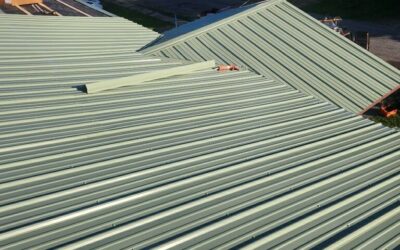Seal the Deal: How Ridge Cap Shingles Protect and Polish Your Roofline
When it comes to roofing, many homeowners focus primarily on the material used for the bulk of their roof—the shingles, tiles, or metal panels that cover the vast majority of the surface area. However, there’s one key element of your roof that often goes overlooked: the ridge. The ridge is the highest point of your roof, where two sloping sides meet, and it’s incredibly important for both functional and aesthetic reasons. To protect and polish this area, ridge cap shingles are essential.
Ridge cap shingles not only serve a protective role but also enhance the overall look of your home by completing your roofline. In this blog, we’ll take a deep dive into ridge cap shingles—what they are, how they work, their benefits, and why they’re a critical part of your roof’s construction. Whether you’re building a new roof or replacing an existing one, understanding ridge cap shingles can help you make informed decisions about your roof’s design and functionality.
What Are Ridge Cap Shingles?
Ridge cap shingles are specialized shingles installed along the ridge of your roof. They are designed to cap or cover the horizontal seams where two roof slopes meet. These shingles are often more durable and thicker than standard shingles, providing extra protection for the most vulnerable part of your roof.
Ridge cap shingles come in various shapes, sizes, and materials to match the specific roofing system in place. For example, they can be made of asphalt, wood, metal, or other materials, depending on the type of roof. The purpose of these shingles is not only to cover the ridge and add a neat finish but also to provide protection from the elements, such as rain, snow, and wind.
The primary function of ridge cap shingles is to act as a barrier against weather and water infiltration, which could otherwise cause significant damage to your roof and attic. By covering the ridge, ridge cap shingles prevent water from seeping under the roof, keeping the interior of your home dry and secure.
How Ridge Cap Shingles Work
Ridge cap shingles play a crucial role in the overall structure and protection of your roof. These shingles are designed to fit snugly along the ridge of your roof, sealing the gap where the two sloped surfaces meet. This serves several purposes:
1. Water Resistance
The ridge of a roof is a particularly vulnerable area when it comes to water infiltration. Rain, snow, and other forms of precipitation can easily seep into any cracks or gaps along the ridge, potentially leading to leaks and water damage inside your home. Ridge cap shingles prevent this by sealing the ridge and providing a waterproof barrier that protects your roof from water infiltration.
2. Wind Resistance
High winds can cause serious damage to your roof if they aren’t properly mitigated. Without ridge cap shingles, wind can force its way under the roofing materials, loosening shingles or tiles and causing them to become dislodged. Ridge cap shingles secure the roof’s edges, providing additional protection against wind damage by keeping shingles in place and preventing wind-driven water from entering.
3. Ventilation
In addition to their protective qualities, ridge cap shingles are often equipped with vents. These vented ridge cap shingles allow hot air and moisture to escape from your attic, improving airflow and reducing the risk of mold and mildew growth. Proper ventilation also helps maintain a consistent temperature throughout your home, which can lead to better energy efficiency.
4. Curb Appeal and Aesthetic Finish
Ridge cap shingles provide the finishing touch for your roofline, giving it a clean and polished appearance. Without them, the ridge may look unfinished, which can detract from the overall aesthetic of your home. Ridge cap shingles come in various styles and colors, so you can choose options that complement your existing roofing material and enhance the visual appeal of your home.
Types of Ridge Cap Shingles
Ridge cap shingles are available in different styles, materials, and configurations to suit various roof types. Let’s explore the most common types of ridge cap shingles and what makes them unique.
1. Asphalt Ridge Cap Shingles
Asphalt ridge cap shingles are the most common type and are made from the same material as traditional asphalt shingles. These shingles are designed to match the color and texture of standard roofing materials, providing a seamless, uniform look for your roof. Asphalt ridge cap shingles are affordable, durable, and effective at protecting the ridge from water, wind, and other elements.
2. Pre-Formed Ridge Cap Shingles
Pre-formed ridge cap shingles are a specialized type of asphalt shingle that comes pre-shaped and ready for installation. These shingles are designed to fit perfectly along the roof’s ridge, making the installation process quicker and easier. Pre-formed ridge cap shingles offer superior protection and a more consistent appearance compared to traditional ridge cap shingles, which must be manually cut to fit the ridge.
3. Wood Ridge Cap Shingles
For homeowners who prefer a more natural or rustic look, wood ridge cap shingles are a popular choice. These shingles are made from wood, typically cedar or redwood, and provide a beautiful, organic finish for the roof. Wood ridge cap shingles are ideal for homes with wooden roofs or rustic architecture but require more maintenance than asphalt or metal options.
4. Metal Ridge Cap Shingles
Metal ridge cap shingles are a durable, long-lasting option that is often used with metal roofing systems. These shingles are typically made from aluminum, steel, or copper and provide excellent protection against the elements. Metal ridge cap shingles are resistant to fire, corrosion, and high winds, making them an excellent choice for homeowners in areas with extreme weather conditions.
5. Tile Ridge Cap Shingles
Tile ridge cap shingles are typically used in conjunction with tile roofs, such as clay or concrete tiles. These shingles are designed to match the shape and color of the tiles, creating a cohesive and polished roofline. Tile ridge cap shingles are highly durable and offer excellent protection, although they can be more expensive than other materials.
6. Slate Ridge Cap Shingles
Slate ridge cap shingles are used with slate roofs, which are known for their natural beauty and long lifespan. These shingles are made from high-quality slate stone and are designed to blend seamlessly with the roof tiles. While slate ridge cap shingles are durable and elegant, they can be more costly and difficult to install compared to other materials.
Benefits of Ridge Cap Shingles
Ridge cap shingles offer a wide range of benefits that go beyond their aesthetic appeal. Let’s take a closer look at the key advantages of installing ridge cap shingles on your roof.
1. Enhanced Protection Against Water Damage
The ridge of your roof is one of the most vulnerable areas when it comes to water infiltration. Without ridge cap shingles, rainwater can seep under your roofing material and into your attic, leading to leaks, water stains, and potential structural damage. Ridge cap shingles seal the ridge, providing a waterproof barrier that helps prevent water from entering your home.
2. Improved Wind Resistance
Wind can be a major concern for homeowners, especially in areas prone to storms or high winds. Ridge cap shingles help secure the roof, preventing wind from lifting shingles and causing damage. They keep the ridge tightly sealed and provide additional wind resistance, which can help protect your roof from storm damage.
3. Enhanced Energy Efficiency
Proper ventilation is a key factor in maintaining a comfortable and energy-efficient home. Ridge cap shingles with built-in ventilation allow hot air and moisture to escape from your attic, reducing the risk of mold and improving airflow. This ventilation helps maintain a consistent temperature throughout your home, reducing the workload on your HVAC system and potentially lowering your energy bills.
4. Aesthetic Appeal
Ridge cap shingles provide the finishing touch that ties together your roof’s appearance. They create a clean, polished roofline that enhances the overall look of your home. Ridge cap shingles are available in a wide variety of colors and materials, allowing you to choose the option that best complements your existing roof and home’s architecture.
5. Long-Lasting Durability
Ridge cap shingles are designed to be durable and long-lasting. Made from high-quality materials such as asphalt, metal, wood, or tile, they offer superior protection for your roof and can withstand the elements for many years. Properly installed ridge cap shingles can last as long as the rest of your roof, providing ongoing protection against weather, wear, and tear.
6. Easy Maintenance
Maintaining ridge cap shingles is relatively simple. Regular roof inspections and cleaning will help ensure that the shingles remain in good condition and continue to protect your roof effectively. Keeping the ridge free of debris and checking for any signs of damage can help extend the lifespan of your roof.
How to Install Ridge Cap Shingles
Installing ridge cap shingles is a relatively straightforward process, but it requires careful attention to detail to ensure a proper fit and secure installation. Here’s a general overview of how ridge cap shingles are installed:
- Prepare the Ridge: Before installing ridge cap shingles, make sure the ridge is free of debris, dirt, or old roofing materials. If there are any damaged or worn shingles, replace them to ensure a solid foundation for the new ridge cap shingles.
- Place the Underlayment: Some roofing systems may require an underlayment along the ridge before the ridge cap shingles are installed. This provides an additional layer of protection against water infiltration.
- Install the First Ridge Cap Shingle: Start at one end of the ridge and place the first ridge cap shingle. Align it with the roofline and secure it in place using roofing nails or other fasteners recommended by the manufacturer.
- Continue Installing the Ridge Cap Shingles: Install additional ridge cap shingles along the ridge, overlapping each one slightly to create a continuous seal. Be sure to secure each shingle properly and ensure the overlaps are even for a neat, uniform appearance.
- Finish the Ridge: Once all the ridge cap shingles are installed, check for any gaps or areas that need additional sealing. Apply roofing sealant to any seams or gaps as necessary to ensure a watertight seal.
Conclusion
Ridge cap shingles are an essential component of your roof’s design and functionality. They provide vital protection against water, wind, and other elements while also enhancing the aesthetic appeal of your home. Whether you’re building a new roof or replacing an existing one, ridge cap shingles offer long-lasting durability and an attractive finish that ties your roofline together.
At S&K Construction and Remodeling LLC, we specialize in high-quality roofing services, including the installation of ridge cap shingles. Our experienced team can help you choose the right ridge cap shingles for your home and ensure that they are installed correctly for maximum protection and performance.
If you’re ready to upgrade your roof with ridge cap shingles or need expert advice on your roofing project, contact us today. We’re here to help you seal the deal and protect your home for years to come.
 (440) 307-2060
(440) 307-2060

